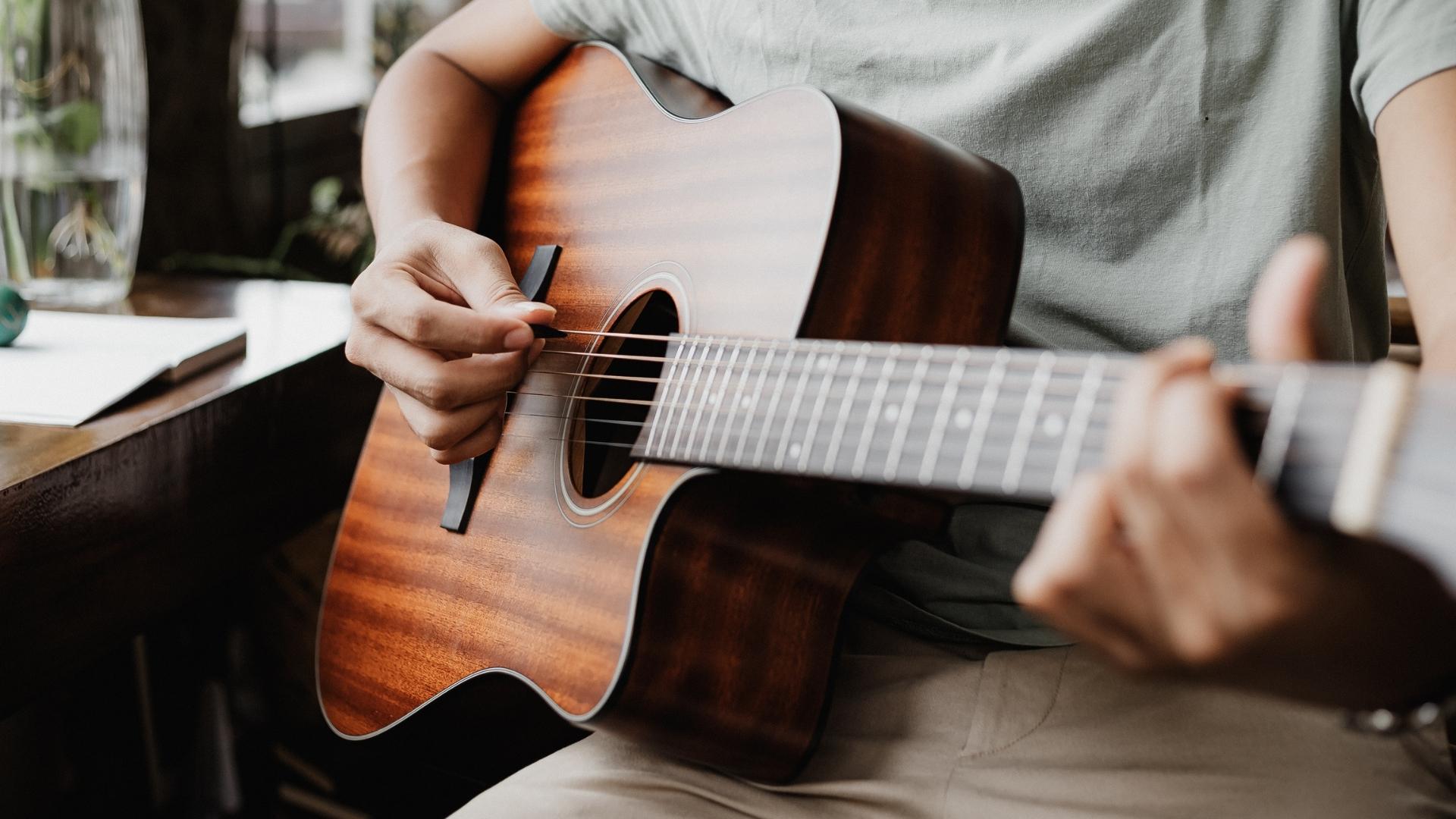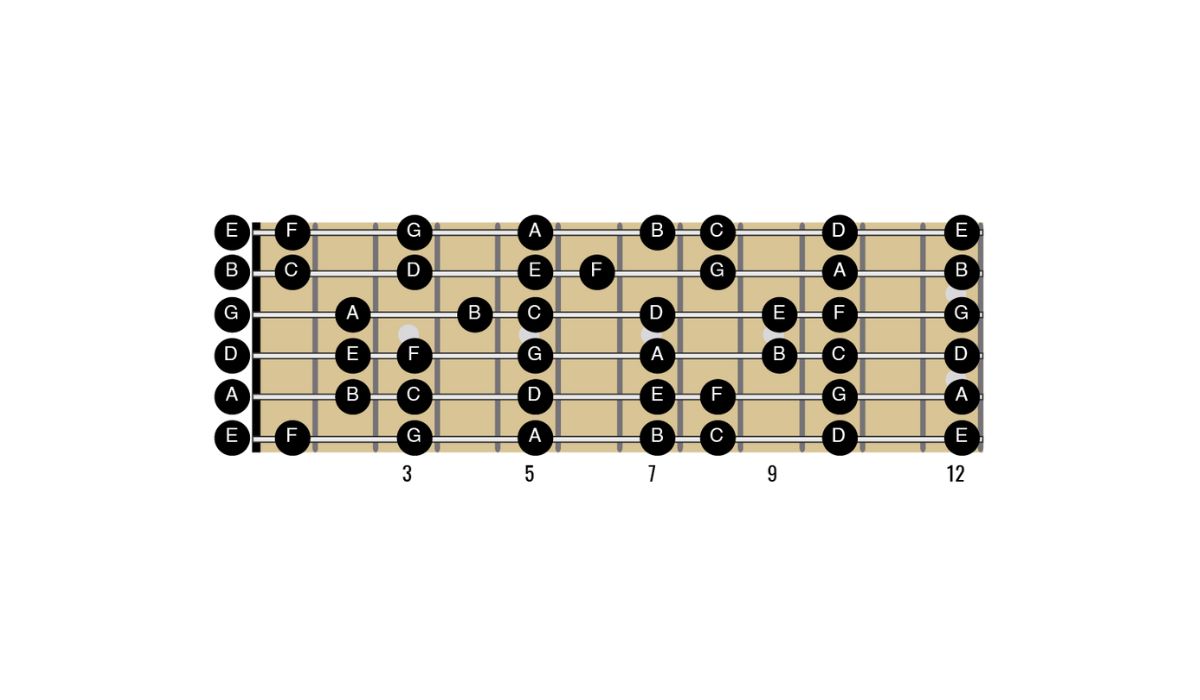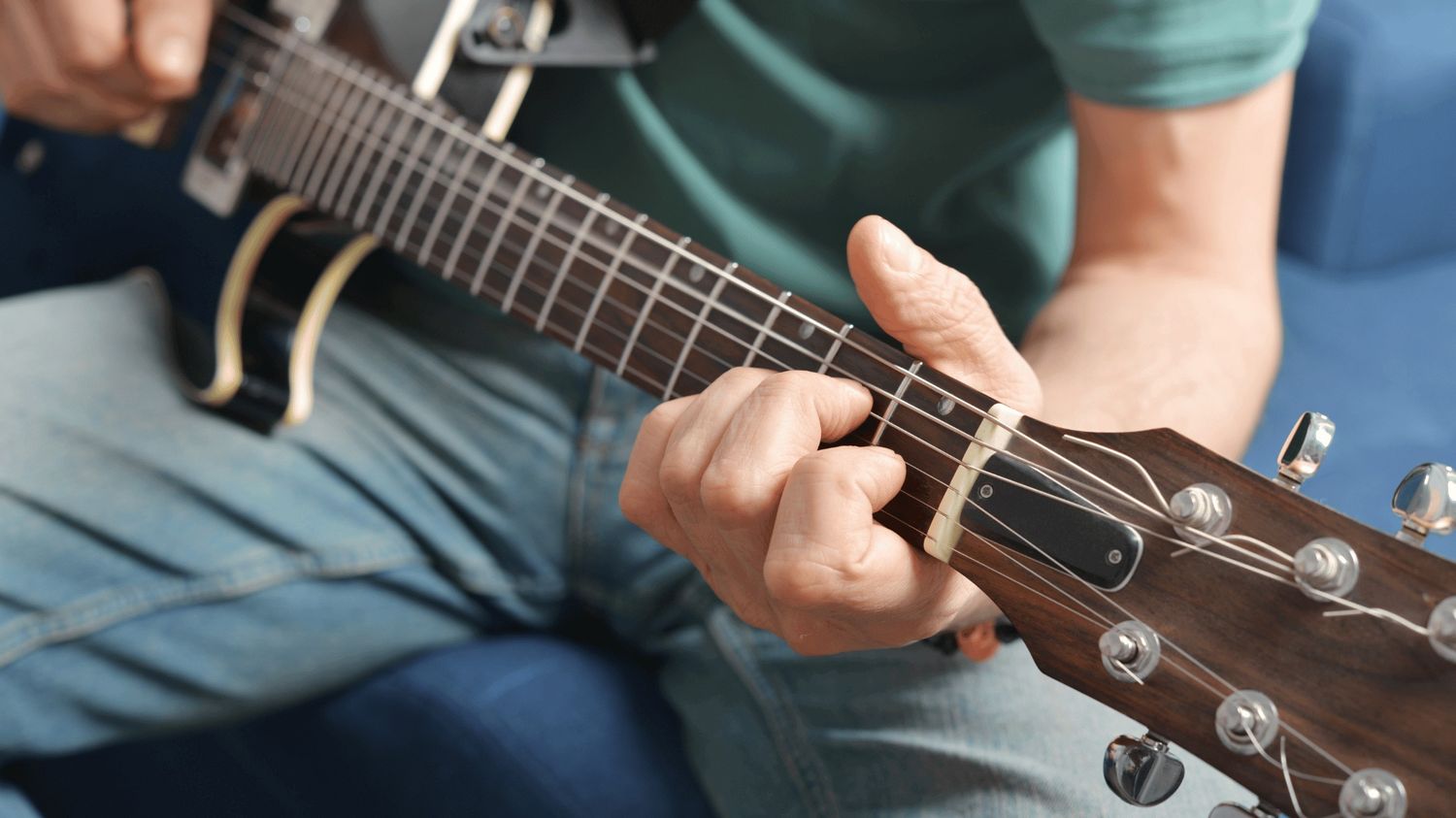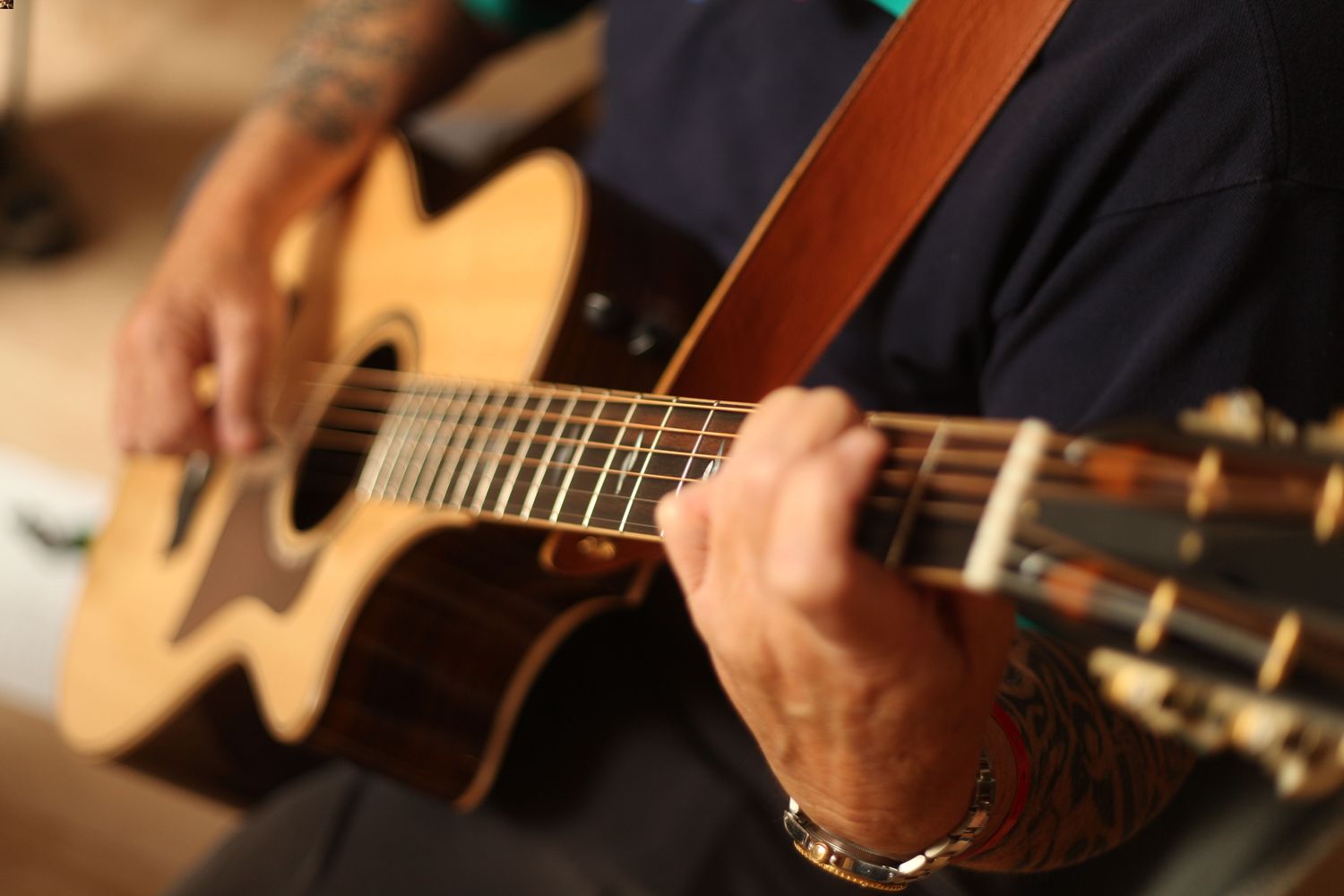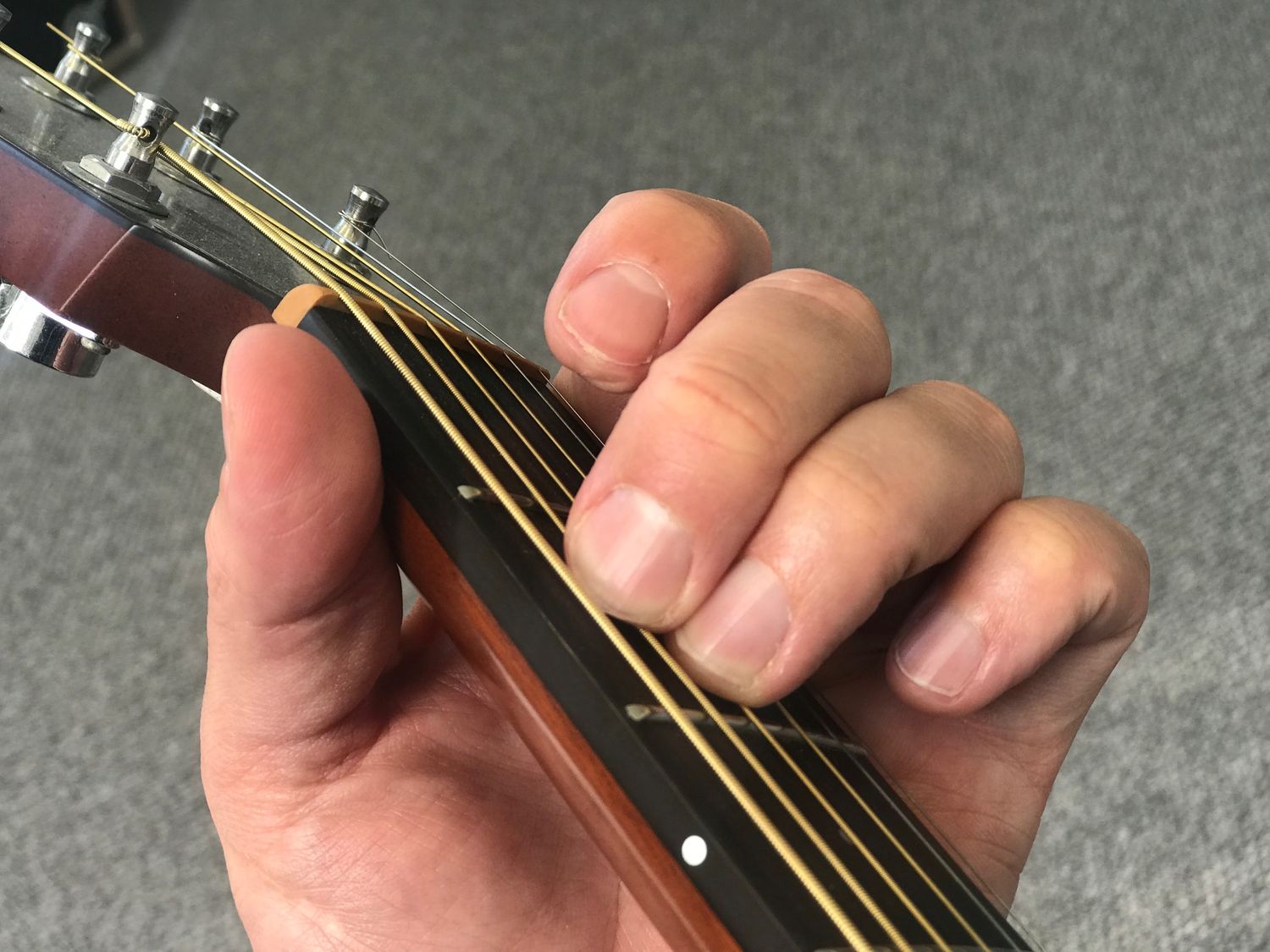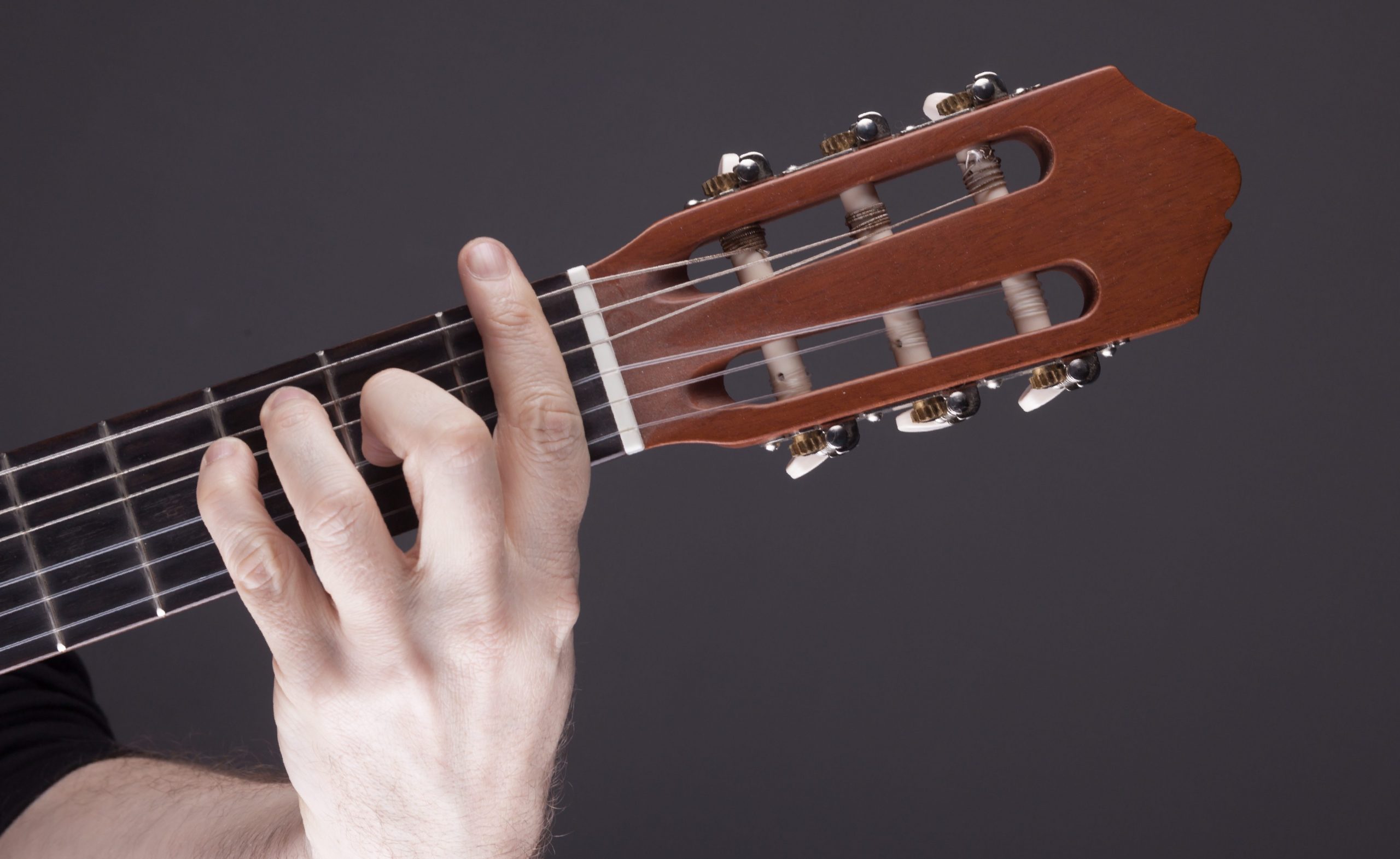Home>Instruments>Guitar>How To Play Guitar For Kids


Guitar
How To Play Guitar For Kids
Modified: February 16, 2024
Learn how to play guitar for kids with our fun and easy guitar lessons. Get your child started on their musical journey today!
(Many of the links in this article redirect to a specific reviewed product. Your purchase of these products through affiliate links helps to generate commission for AudioLover.com, at no extra cost. Learn more)
Table of Contents
Introduction
Introduction
Learning to play the guitar is an exciting and rewarding endeavor for kids. Not only does it provide a creative outlet, but it also helps develop essential skills such as hand-eye coordination, discipline, and a deeper understanding of music. Whether your child aspires to become the next guitar virtuoso or simply wants to strum along to their favorite songs, mastering this instrument can be a fulfilling journey.
In this comprehensive guide, we will walk you through the fundamental aspects of playing the guitar, from choosing the right instrument to learning basic chords and strumming techniques. By the end of this article, you and your child will have a solid foundation to embark on a musical adventure together.
Learning to play the guitar at a young age not only fosters a love for music but also provides a valuable skill that can last a lifetime. With the right guidance and practice, your child can unlock their musical potential and experience the joy of creating beautiful melodies. So, let's dive in and discover the wonderful world of guitar playing for kids!
Choosing the Right Guitar
Choosing the Right Guitar
Before your child can begin their guitar journey, it’s essential to select the right instrument that suits their age, size, and musical preferences. For young beginners, a nylon-string or steel-string acoustic guitar is often the most suitable choice due to its ease of playability and versatility. These guitars come in various sizes, with smaller options specifically designed for children, ensuring a comfortable playing experience.
When choosing a guitar, consider the following factors:
- Size: Ensure that the guitar is proportionate to your child’s body size. A smaller, lightweight instrument will be more manageable and comfortable for young players.
- Playability: Opt for a guitar with low action (the distance between the strings and the fretboard) to make it easier for small hands to press the strings down.
- Tone: Acoustic guitars produce warm, resonant tones that are well-suited for a variety of musical styles. Let your child strum a few chords on different guitars to see which tone they prefer.
- Budget: While it’s important to invest in a quality instrument, there are affordable options specifically designed for young beginners.
Visiting a music store and allowing your child to test out different guitars can be an enjoyable and informative experience. Encourage them to hold the instruments, pluck the strings, and get a feel for the overall playability. Additionally, seeking advice from knowledgeable staff can help you make an informed decision based on your child’s individual needs and preferences.
By selecting a guitar that resonates with your child, you set the stage for an enjoyable and fulfilling musical journey. With the right instrument in hand, your young guitarist can eagerly move on to the next step: learning the basic anatomy of the guitar.
Basic Guitar Anatomy
Basic Guitar Anatomy
Understanding the basic components of a guitar is essential for young aspiring musicians. By familiarizing themselves with the instrument’s anatomy, kids can develop a deeper appreciation for how it produces sound and how they interact with it. Here are the primary parts of an acoustic guitar:
- Body: The body of the guitar is the large, hollow section that amplifies the sound produced by the strings. It is typically made of wood and contributes significantly to the instrument’s resonance and tone.
- Soundhole: This is the opening on the body of the guitar that allows the sound to escape. It plays a crucial role in projecting the instrument’s acoustic sound.
- Neck: The neck is the long, slender section of the guitar that extends from the body. It holds the fretboard and provides support for the strings.
- Fretboard: The fretboard is a flat, usually wooden surface on the neck of the guitar. It contains metal frets, which are the raised wires that divide the fretboard into different notes.
- Headstock: Located at the end of the neck, the headstock holds the tuning pegs, which are used to adjust the tension of the strings and tune the guitar.
- Tuning Pegs: These are small, geared pegs located on the headstock. By turning the tuning pegs, the tension of the strings can be adjusted to achieve the correct pitch.
- Bridge: The bridge is a wooden or metal piece on the body of the guitar that supports the strings and transmits their vibrations to the soundboard.
- Strings: The strings are the vibrating elements of the guitar that produce sound when plucked or strummed. Acoustic guitars typically have six strings, each tuned to a specific note.
Introducing kids to the various parts of the guitar can be an engaging and interactive experience. Encourage them to identify and name each component, fostering a sense of connection with the instrument. By understanding the role of each part, children can begin to grasp how the guitar produces music and how they can manipulate its elements to create beautiful sounds.
With a solid understanding of the guitar’s anatomy, young learners can progress to the next steps of tuning the instrument and mastering the fundamental chords. This foundational knowledge sets the stage for an exciting musical journey filled with discovery and creativity.
Tuning the Guitar
Tuning the Guitar
Before diving into playing, it’s crucial to ensure that the guitar is properly tuned. Tuning is the process of adjusting the tension of each string to achieve the correct pitch, ensuring that the instrument produces harmonious and pleasant sounds. For young beginners, using an electronic tuner can simplify this essential step and help develop a good ear for pitch.
Here’s a basic guide to tuning a guitar using an electronic tuner:
- Turn on the Tuner: Activate the electronic tuner and ensure it’s set to “guitar” mode.
- Pluck the Low E String: Start by plucking the lowest-pitched string, the sixth string (E). The tuner will display the note played and indicate whether it’s in tune.
- Adjust the Tuning Peg: If the tuner indicates that the string is flat or sharp, turn the corresponding tuning peg to adjust the tension until the string matches the correct pitch.
- Repeat for Remaining Strings: Proceed to tune the remaining strings (A, D, G, B, and high E) using the same method, starting with the fifth string (A) and working your way up to the first string (high E).
Once all the strings are in tune, strumming a few chords or playing individual notes can help ensure that the guitar sounds harmonious and resonant. Tuning the guitar regularly is essential, as environmental factors and playing can cause the strings to gradually lose their pitch.
For young learners, tuning the guitar can be an educational and empowering experience. Encourage them to participate in the tuning process, allowing them to develop a sense of pitch and an understanding of how small adjustments can significantly impact the instrument’s sound. Additionally, praising their ability to tune the guitar effectively can boost their confidence and motivation to continue learning.
With the guitar properly tuned, children can proceed to the next step: learning how to hold the instrument comfortably and confidently. A well-tuned guitar sets the stage for enjoyable and melodious practice sessions, laying the groundwork for a lifelong love of music.
Holding the Guitar
Holding the Guitar
Learning the proper way to hold the guitar is essential for young beginners, as it sets the foundation for good playing posture and technique. By adopting the correct positioning, kids can play comfortably and avoid unnecessary strain on their bodies. Here’s a step-by-step guide to help children hold the guitar with ease:
- Sit or Stand Comfortably: Whether sitting or standing, ensure that your child is in a relaxed and comfortable position. If sitting, use a footstool or an adjustable guitar footrest to elevate the left leg, allowing the guitar to rest on the elevated leg for optimal positioning.
- Position the Guitar: Place the guitar on the elevated leg (left leg for right-handed players, right leg for left-handed players) with the curved side of the body resting against the child’s torso. The guitar’s neck should be angled upward, allowing easy access to the fretboard.
- Straighten the Back: Encourage your child to sit or stand with a straight back and relaxed shoulders. Maintaining good posture while playing contributes to better breathing, focus, and overall comfort.
- Slightly Tilt the Guitar: Tilt the top of the guitar slightly toward your child to facilitate a clear view of the fretboard and ensure that their strumming hand can move freely across the strings.
- Square the Shoulders: Ensure that both shoulders are squared and not hunched over. This promotes a balanced and relaxed playing posture, reducing tension and fatigue.
Practicing these foundational techniques consistently helps young guitarists develop a sense of comfort and familiarity with the instrument. It’s important to remind children to relax their grip on the guitar and maintain a natural, unhurried approach to playing. As they become more accustomed to holding the guitar, they can focus on mastering basic chords and strumming patterns with greater ease.
Furthermore, encouraging kids to visualize themselves playing in front of an audience can inspire a sense of confidence and stage presence. By fostering a positive and imaginative mindset, children can approach their guitar practice with enthusiasm and creativity.
With the guitar held comfortably and confidently, young musicians can progress to the next stage of their musical journey: learning basic chords and exploring various strumming techniques. A solid foundation in holding the guitar paves the way for enjoyable and productive practice sessions, setting the stage for musical growth and self-expression.
Basic Chords
Basic Chords
Mastering basic chords is a pivotal step in a young guitarist’s musical education. Chords are the building blocks of countless songs and provide the harmonic framework for melody and rhythm. By learning and practicing fundamental chords, children can begin to play their favorite tunes and develop a strong foundation in guitar playing.
Here are some essential beginner chords that kids can start with:
- C Major (C): This chord is formed by placing the ring finger on the third fret of the fifth string, the middle finger on the second fret of the fourth string, and the index finger on the first fret of the second string. Strum from the fifth string downwards, avoiding the sixth string.
- G Major (G): The G chord is created by placing the ring finger on the third fret of the first string, the middle finger on the second fret of the fifth string, and the index finger on the second fret of the sixth string. Strum all the strings, making sure to avoid muting any of them.
- D Major (D): To play the D chord, position the index finger on the second fret of the third string, the ring finger on the third fret of the second string, and the middle finger on the second fret of the first string. Strum from the fourth string downwards, omitting the fifth and sixth strings.
- E Minor (Em): This chord involves placing the index and middle fingers on the second fret of the fifth and fourth strings, respectively. Strum all the strings, focusing on producing clear and resonant notes.
Encourage your child to practice transitioning between these chords smoothly, ensuring that each note rings out clearly. Using visual aids such as chord charts or diagrams can help kids visualize finger placement and enhance their understanding of chord structures.
Furthermore, incorporating simple songs that utilize these basic chords can make the learning process enjoyable and rewarding. Familiar tunes such as “Twinkle, Twinkle, Little Star” or “Happy Birthday” can serve as excellent practice pieces, allowing children to apply their newfound chord knowledge in a musical context.
As young guitarists become more proficient in forming chords and transitioning between them, they can explore additional chord variations and expand their repertoire. The ability to play basic chords lays the groundwork for more advanced techniques and paves the way for creative expression through music.
With a solid grasp of basic chords, children can progress to learning strumming techniques, further enhancing their musical abilities and setting the stage for playing simple songs with confidence and joy.
Strumming Techniques
Strumming Techniques
Mastering strumming techniques is an integral part of a young guitarist’s musical journey. Strumming patterns and rhythms add depth and character to the music, allowing children to infuse their playing with emotion and creativity. Here are some foundational strumming techniques that kids can explore as they progress in their guitar playing:
- Downward Strumming: The simplest strumming technique involves strumming downward across the strings with either a pick or the fingertips. Encourage your child to maintain a relaxed wrist and produce consistent, fluid strokes for a clear and resonant sound.
- Upward Strumming: Once comfortable with downward strumming, introduce upward strumming to create a full strumming motion. This technique involves strumming upward across the strings, complementing the downward strokes for a balanced rhythm.
- Strumming Patterns: Introduce basic strumming patterns, such as the popular “down, down, up, up, down” pattern. Practice these patterns slowly at first, gradually increasing the tempo as your child becomes more confident.
- Dynamic Strumming: Encourage kids to experiment with dynamic strumming by varying the intensity and speed of their strumming. This adds expression and nuance to their playing, allowing them to convey different moods and emotions through the music.
It’s important to emphasize the rhythmic aspect of strumming, as it forms the backbone of many songs. Encourage children to tap their foot or nod their head to the beat while strumming, fostering a strong sense of timing and musicality.
Additionally, incorporating simple chord progressions with varied strumming patterns can help kids internalize different rhythmic structures and develop a keen ear for musical phrasing. As they become more adept at strumming, they can explore more complex patterns and embellishments, further enhancing their playing style.
Furthermore, introducing children to the concept of strumming dynamics, such as accenting certain beats or using muted strums, can add depth and texture to their playing. This exploration of dynamics allows young guitarists to express themselves more fully and inject personality into their music.
With a solid foundation in strumming techniques, kids can progress to playing simple songs, combining chords and strumming patterns to create enjoyable and recognizable melodies. The ability to strum with confidence and precision opens the door to a world of musical possibilities, empowering young musicians to express themselves through the universal language of music.
Playing Simple Songs
Playing Simple Songs
Once children have gained proficiency in basic chords and strumming techniques, they can embark on the exciting journey of playing simple songs on the guitar. Introducing familiar melodies and tunes not only reinforces their learning but also instills a sense of accomplishment and joy in their musical endeavors. Here’s how kids can approach playing simple songs:
- Song Selection: Choose songs that are well-known and easy to play, typically featuring a handful of basic chords and straightforward strumming patterns. Traditional children’s songs, folk tunes, and popular nursery rhymes often fit this criteria.
- Chord Progressions: Identify the chord progressions used in the chosen song and practice transitioning between the chords smoothly. Encourage your child to play along with the original recording or use online resources that provide chord diagrams and song lyrics.
- Rhythm and Timing: Pay attention to the song’s rhythm and timing, ensuring that the strumming patterns align with the melody and lyrics. Clapping or tapping along to the beat can help internalize the song’s rhythmic structure.
- Sing Along: Encourage your child to sing along while playing the guitar, fostering a connection between playing and vocalization. This dual engagement enhances their musical experience and promotes a deeper understanding of song structure.
Playing simple songs provides a tangible sense of achievement and motivates children to continue honing their guitar skills. It also cultivates an appreciation for music as a means of self-expression and communication.
Furthermore, incorporating storytelling and imagination into the song-playing experience can ignite creativity and emotional engagement. Encourage kids to visualize the narrative of the song or create their own stories inspired by the music, fostering a holistic and immersive musical experience.
As children become more adept at playing simple songs, they can gradually explore more diverse genres and expand their repertoire. This exploration broadens their musical horizons and nurtures a lifelong love for playing the guitar.
Ultimately, the ability to play simple songs empowers children to share the joy of music with family and friends, fostering a sense of connection and camaraderie through musical expression. With each song mastered, young guitarists gain confidence and a deeper appreciation for the art of making music.
Practice Tips
Practice Tips
Effective and enjoyable practice sessions are essential for young guitarists to develop their skills and deepen their passion for playing the instrument. Here are some valuable tips to help children make the most of their practice time and progress steadily in their musical journey:
- Consistent Practice: Encourage your child to establish a regular practice routine, dedicating a specific time each day to playing the guitar. Consistency is key to building muscle memory and reinforcing learning.
- Set Achievable Goals: Help your child set realistic and achievable goals for their practice sessions. Whether it’s mastering a new chord, learning a song, or improving strumming technique, setting small milestones provides a sense of accomplishment and motivation.
- Focus on Technique: Emphasize the importance of proper technique, such as hand positioning, finger placement, and posture. Consistent attention to technique ensures efficient progress and reduces the risk of developing bad habits.
- Patience and Persistence: Remind your child that learning the guitar is a journey that requires patience and persistence. Encourage them to embrace challenges and view mistakes as opportunities for growth.
- Explore Musical Styles: Introduce a variety of musical styles and genres to keep practice sessions engaging and diverse. From folk and pop to classical and rock, exploring different styles broadens musical horizons and fosters creativity.
- Play Along with Recordings: Encourage your child to play along with recordings of their favorite songs, adjusting the tempo to match their skill level. This interactive approach enhances rhythm, timing, and musical intuition.
- Seek Inspiration: Expose your child to live performances, music videos, and concerts to inspire and motivate them. Witnessing skilled musicians in action can ignite a passion for playing and fuel their dedication to practice.
Moreover, creating a supportive and encouraging environment during practice sessions is crucial for nurturing a positive attitude towards learning. Celebrate your child’s progress, no matter how small, and provide constructive feedback to guide their development.
Lastly, remind your young guitarist that the most important aspect of practice is to enjoy the process of making music. Encourage them to express themselves creatively, experiment with different sounds, and savor the joy of playing the guitar.
By incorporating these practice tips into their routine, children can cultivate a lifelong passion for music and experience the fulfillment that comes with mastering an instrument. With dedication and guidance, young guitarists can flourish and embark on a rewarding musical journey filled with discovery and self-expression.
Conclusion
Conclusion
Embarking on the journey of learning to play the guitar can be a transformative and enriching experience for children. From selecting the right instrument to mastering basic chords and strumming techniques, each step in the process contributes to their musical growth and personal development.
By providing young guitarists with the necessary guidance, support, and encouragement, parents and educators play a vital role in nurturing their love for music and fostering a lifelong skill. The joy of creating melodies, expressing emotions, and sharing music with others is a gift that can enrich every aspect of a child’s life.
As children progress in their guitar playing, they not only cultivate musical abilities but also develop essential life skills such as discipline, patience, and creativity. The journey of learning an instrument instills a sense of perseverance and dedication that extends beyond the realm of music, shaping their character and mindset for the future.
Furthermore, the ability to play the guitar opens doors to a world of artistic expression, providing a medium through which children can communicate, connect with others, and find solace in times of joy and introspection. Music becomes a companion, a form of self-expression, and a source of comfort, enriching their lives in profound ways.
Ultimately, the journey of learning to play the guitar is not solely about mastering an instrument; it is about fostering a deep and enduring love for music. It is about instilling confidence, creativity, and a sense of accomplishment in children, empowering them to embrace the beauty of art and the joy of creation.
As young guitarists continue to explore and hone their musical abilities, they embark on a path filled with discovery, growth, and the sheer delight of making music. With each chord strummed and every melody played, they carry with them the immeasurable gift of music—a gift that will resonate throughout their lives and bring joy to those around them.
So, let us continue to nurture the musical aspirations of our children, guiding them as they discover the magic of playing the guitar and inspiring them to embrace the endless possibilities that music brings. Together, let us celebrate the transformative power of music in shaping the hearts and minds of the next generation of musicians.

